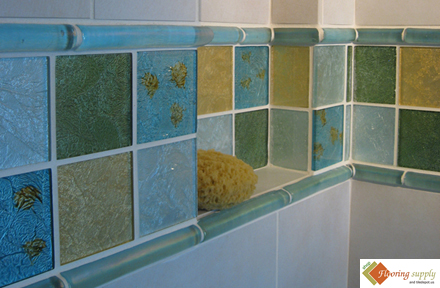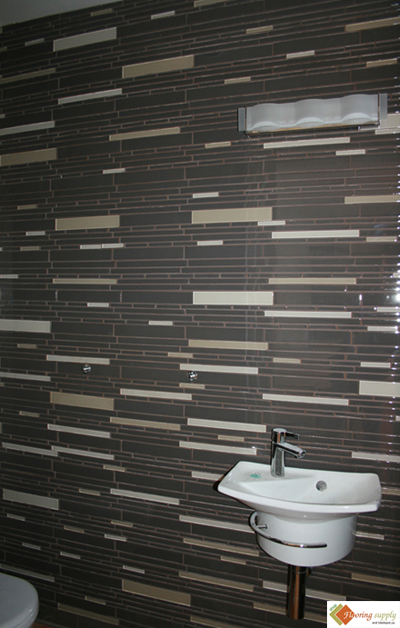For centuries, glass has been a featured material in mosaic media to decorate and articulate a building. Glass tiles are essentially pieces of glass formed into consistent shapes. Glass mosaic tiles are suitable for both internal and external applications as they are impervious to frost, sunlight, and water. This quality makes it best suited for wet or constantly submerged areas. They are easy to clean, maintain, and they never discolor. Glass tiles have a varied application in black slashes of drawing-room, dining, kitchen, bath-room etc…, They are also used to highlight certain features. The spot lighting has further increased their use. Although glass tiles are complex to install the benefits and beauty makes us over see.
Production methods determine look and feel of a glass tile. There are four major types of glass tile based on their manufacturing method.
They are Smalti tile, Fused glass, Sintered and Glass casting
In addition, there are two other eminent glass surface treatments for these tiles: slumping and etching.
Smalti tile is type of glass tile which is Frosted glass, or opaque glass. It has been in use from ancient times. “Smalti” is an Italian word, and refers to a glass paste. Smalti is made by mixing molten glass with metal oxides for color. Translucent Smalti is a popular variant of smalti glass tile. It looks like stained glass with uniform colors.
Byzantine Glass is another smalti variant made from thinner slabs of glass. Metallic Smalti is a swirl of a copper-bearing mineral added into the molten glass before it is pressed. Gold Smalti are made by applying a gold leaf and a thin layer of blown glass.
Fused Tile is manufactured using the fusion method. In this type a flat glass is cut into tiles shapes and then fired in a furnace. The clear glass will show the tile until treated with a color. In this method colors are added to the top or bottom of the glass. Fused glass tiles are characterized with a translucent area and a layer of opaque color visible through the tile. These tiles are further treated with an etching or other coating, for aesthetics or abrasion.
Sintered glass tile is a variety made by pressing glass powder into dies and then heated until the particles fuse. The color is either added into the powder or added topically after cooling. Unlike smalti tiles, sintered tiles tend to have a uniform look. This milky and scratch-resistant finish makes it versatile.
Cast tile is made by inserting chunks of glass into a mold which gives it a layered look. Most recycled glass tile products are made using this method making it environment friendly.
All these variants can be treated to slumping and etching. Slumped glasses are curved into convex/concave shape during firing. Etched glass is a process of applying a thin-translucent layer on the surface of a tile. All these features give glass tile a unique appearance which is unachievable with the conventional tiles. The reverberant and depth of color makes them unique.
Copyright © 2010 FlooringSupplyShop.com


It was very interesting for me to read this article. Thanx for it. I like such topics and everything connected to them. I definitely want to read a bit more soon.
Natasha Stepman